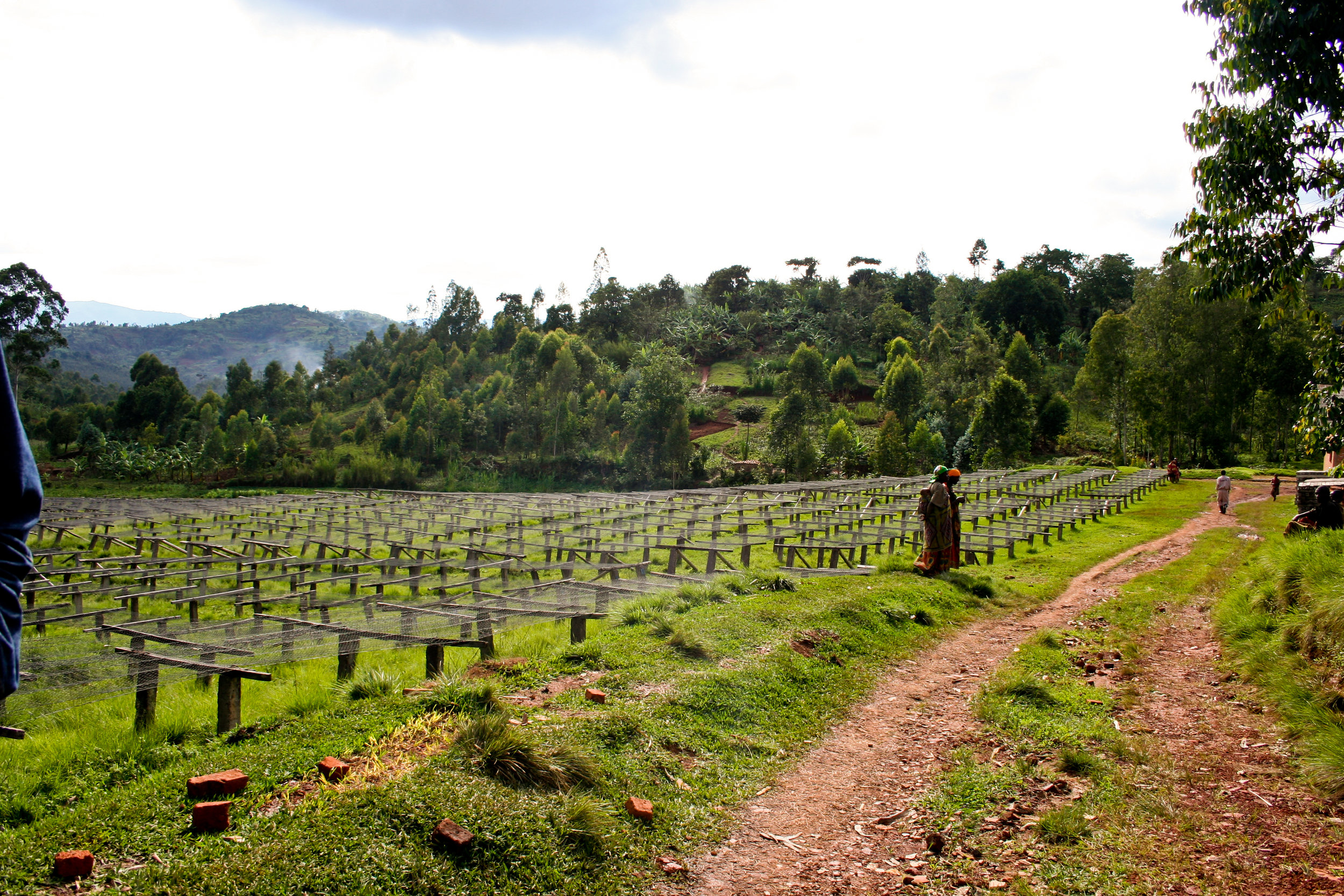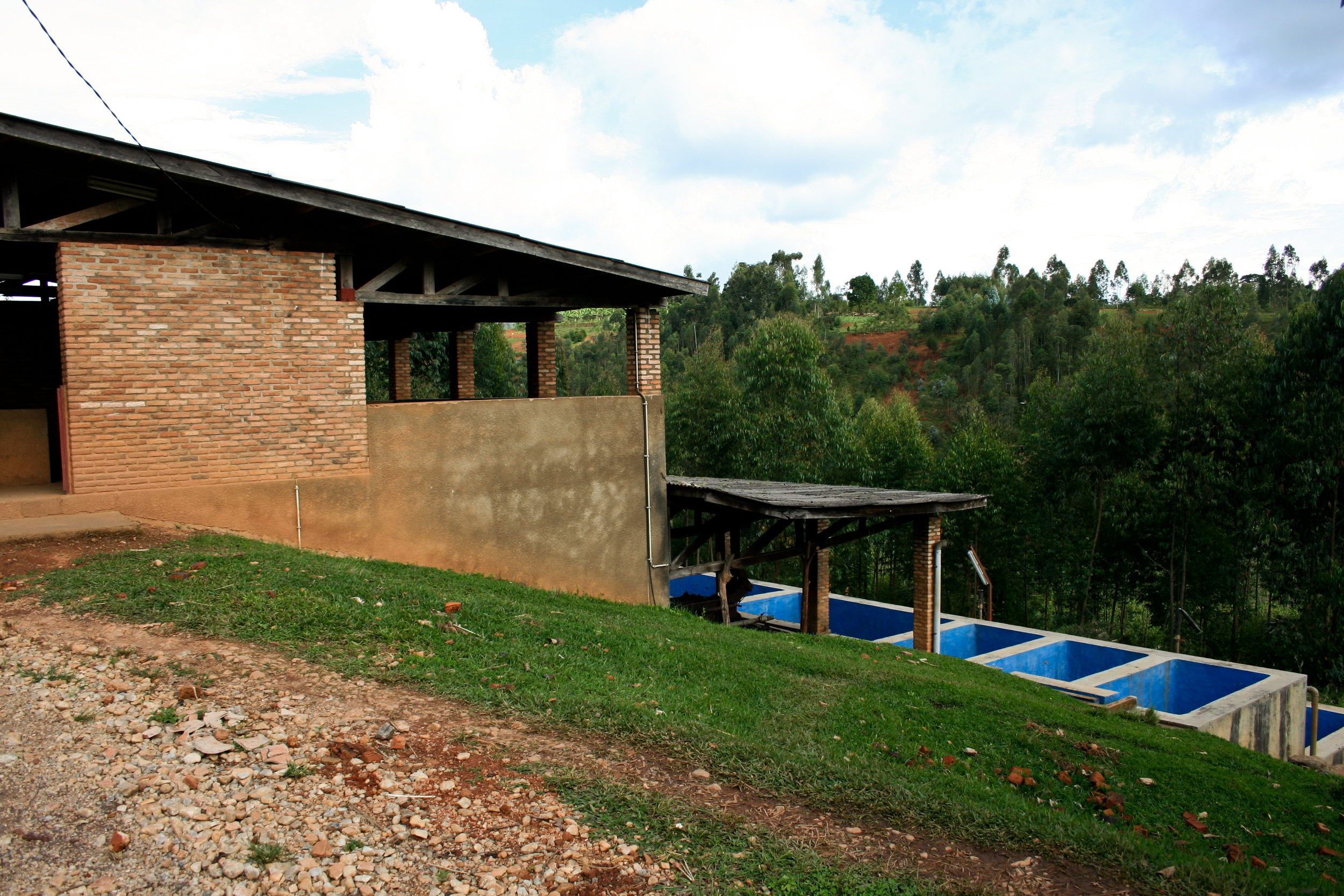 Name: Nemba
Owner: Webcor
Manager: Fabien Nyambere
Province: Kayanza
Commune: Muruta
Founding year: 1993
Elevation (masl): 1 816
Varietals: Bourbon
Water source: Spring-fed
Production: 247 153 kg (2012)
Number of delivering cherry suppliers: 1 295 (2012)
Soil: Hygro-Xéro-Ferralsols with Ferralic
Average rainfall (mm): 1 345
Average farm size (ha): 0.3
Processing method: Wet
Name: Nemba
Owner: Webcor
Manager: Fabien Nyambere
Province: Kayanza
Commune: Muruta
Founding year: 1993
Elevation (masl): 1 816
Varietals: Bourbon
Water source: Spring-fed
Production: 247 153 kg (2012)
Number of delivering cherry suppliers: 1 295 (2012)
Soil: Hygro-Xéro-Ferralsols with Ferralic
Average rainfall (mm): 1 345
Average farm size (ha): 0.3
Processing method: Wet
About Nemba
Nemba is two entities: a cooperative and a washing station. The cooperative is comprised of the delivering cherry producers to the washing station and Webcor owns the washing station. At the beginning and end of harvest, the washing station is open twice a week and operates everyday during the peak of the harvest period.
According to Nemba washing station's manager, Fabien, the biggest challenges to quality are good agricultural practices and farmer access to fertilizer. Webcor's team of agronomists work with the farmer associations on educating good agricultural practice but fertilizer use is a challenge connected with poverty: cherry producers struggle to be able to afford fertilizer. However, Fabien believes that higher prices can be achieved in the market as farmers increase yields with better agronomic practices and improve the quality of cherry selection. To that end, Nemba provides support to farmers through nurseries’ installation in addition to the agricultural training in best practices
Background to Webcor
During Burundi's first round of privatizing its washing stations in 2009, Webcor acquired 13 of the washing stations located in the Kayanza and Ngozi regions. These provinces, especially Kayanza, are well-known and highly regarded for producing some of the best coffees in the country. High elevations, rich volcanic soils and experienced and disciplined farmers are some of the things that set Kayanza apart from neighbouring coffee growing areas within Burundi.
Webcor has set itself apart from the competition by developing a professional agronomic team, comprised of three engineers who oversee the three regions Webcor currently operate in. This team is responsible for overseeing agronomic best practice, education of and collaborating with cherry producers both pre-harvest and harvest, with an emphasis on ensuring producers have the necessary tools and knowledge to oversee and determine agronomic practices best suited to producers' own plantations.
Due to civil war and complete state control of Burundi's coffee sector, cherry producers have had little control over the coffee production process, leading to wildly fluctuating harvest yields and poor quality control. Fortunately, Burundi is well provisioned with good agricultural and climatic conditions, as well as varieties with great potential for producing unique and quality coffees. Webcor's mandate is to increase coffee productivity and quality through financial investment, a strong professional team of agronomists and a focus on good cherry selection. This team is excited about the opportunity of closing the gap between cherry producer and buyer and facilitating producer independence through good resource management and transparent business practice.
Burundi Coffee: Context
Burundi is a landlocked country in Central Africa bordered by the Democratic Republic of the Congo, Rwanda and Tanzania. The official languages are Kirundi and French, with pockets of Swahili being spoken mostly in Bujumbura (the capital city), along Lake Tanganyika. Hilly and mountainous, Burundi boasts ideal agroecology for coffee cultivation. The country’s economy is predominantly agricultural with more than 90% of the population dependent on subsistence agriculture. Economic growth depends very heavily on coffee and tea exports, which together account for 90% of foreign exchange earnings.
Coffee growing and production began during Belgian occupation in the early 1930s and from 1980 to 1993, Burundi invested heavily in the coffee subsector with the heavy assistance—both monetary and strategic—of the World Bank, which helped implement an ambitious program of coffee washing station construction and tree planting. During these years, the number of coffee shrubs increased from 90 million to over 220 million and 133 washing stations were built and strategically placed throughout the country. Currently, there are over 160 washing stations in Burundi.
Coffee is Burundi’s biggest export revenue earner, making up as high as 80% of earnings. There are 600 000 families, close to 40% of the population, involved in the coffee subsector. Until 2007, the coffee subsector was controlled by the state, with the result that all facilities (i.e. washing stations and dry mills) and exporting were coordinated by the government. Coffee has historically been of low quality, subsequently receiving low prices dependent on commodities exchange markets. However, in 2006, the government started liberalizing the subsector and began allowing privatization of coffee washing stations (CWS) and dry mills leading to a continuing expansion of producer access into high quality specialty markets.
The hilly topography of Burundi has made for how the country is organized politically and infrastructurally. A colline in Burundi (i.e. hill) is like a borough or rural neighbourhood. Ultimately, a certain number of collines constitute a commune (i.e. county). The farmers that live on one colline are likely to deliver their coffee cherries to the same washing station that is located within accessible distance from their farms. The different lots represent day-lots from these wet mills.
The climate in Burundi is predominantly equatorial, but the many hilly and mountainous regions, where coffee is grown, enjoy a moderate climate. Average temperatures vary from 17 to 23C and there are distinct wet and dry seasons: the dry seasons run from June to August and again from December to January; the wet seasons are February to May and September to November. These factors, combined with the country’s agroecology, combine for an ideal environment for coffee growing. Under these conditions, cherries can undergo ideal development due to stable and the relatively low temperatures on the plains. In addition, the distinct seasons allow for a proper blossoming of the plants and good drying conditions for the coffee beans (seeds). The main flowering period runs from October until November and there are two harvesting periods: the main harvest runs from February to March; the secondary harvest from April until May.



